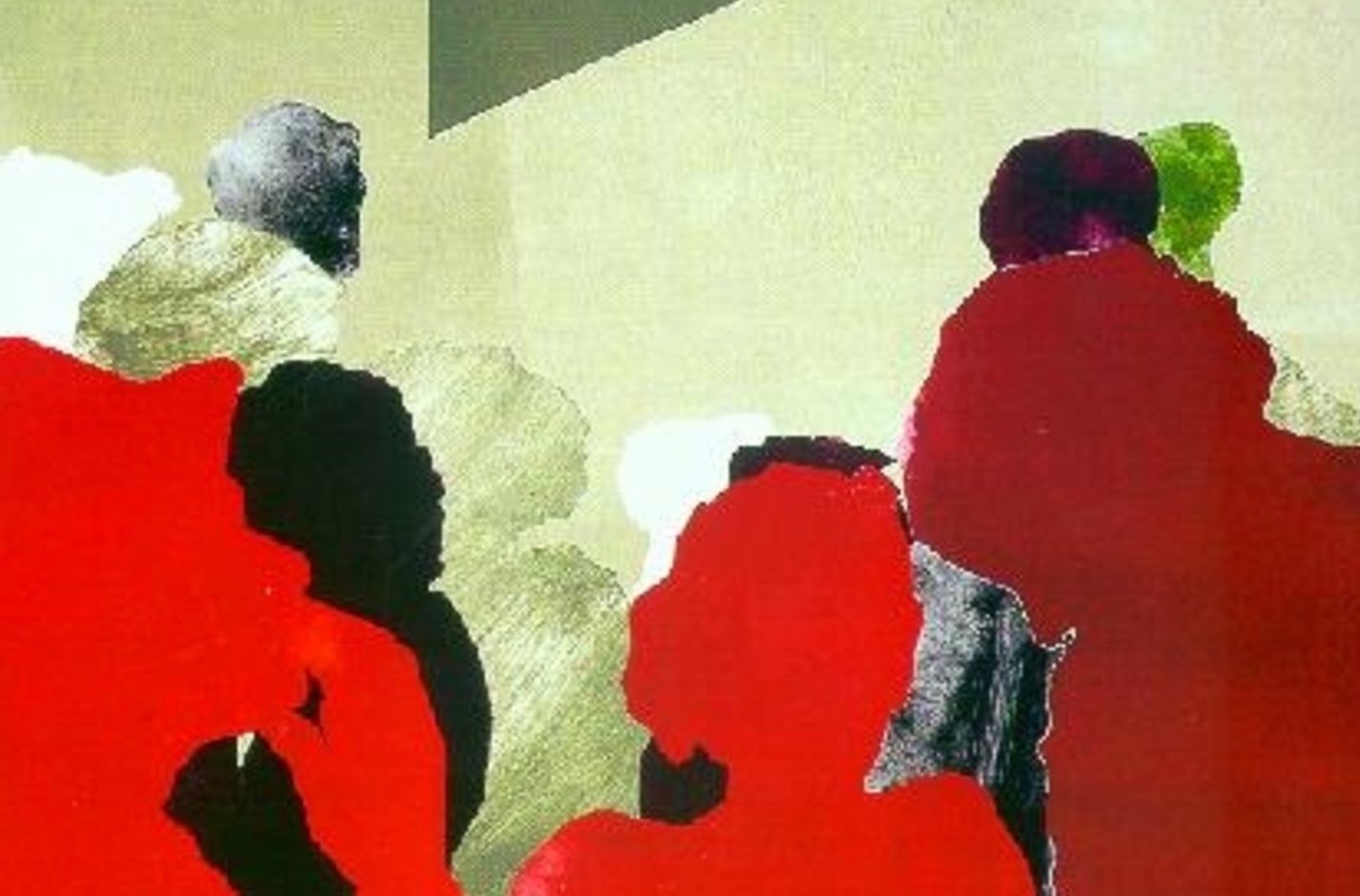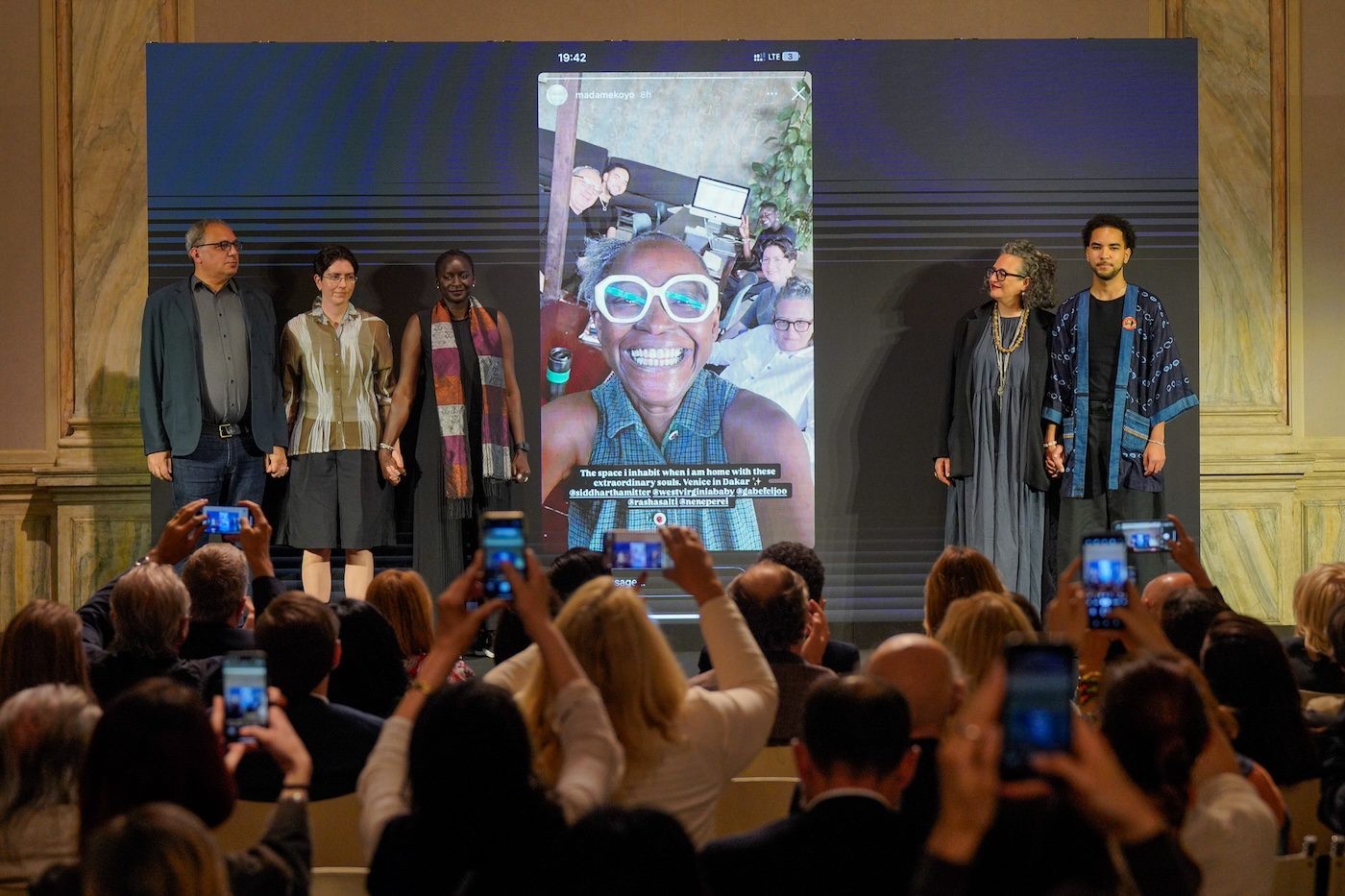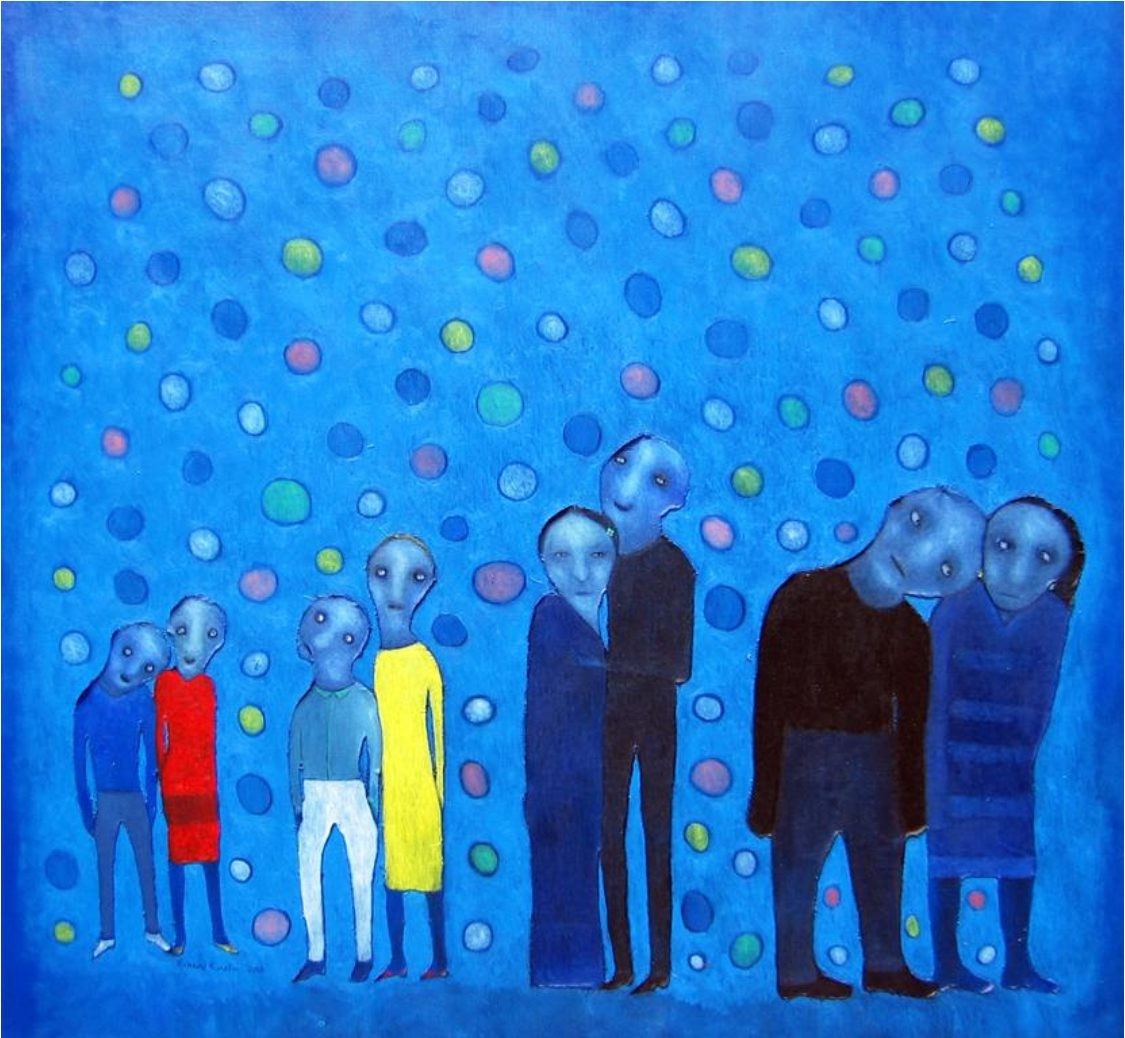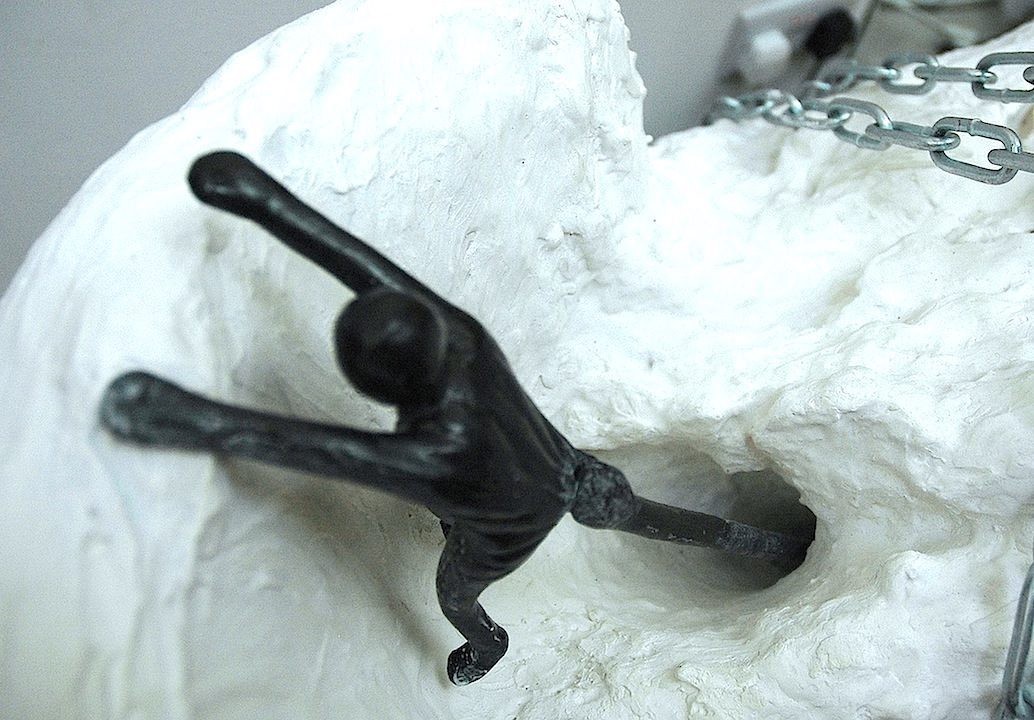Kenya is Another Country

08 May 2017
Magazine C& Magazine
6 min read
With just a few days to go before the 57th Biennale opens, all eyes are on Venice. This year’s exhibition, themed Viva Arte Viva, is curated by Christine Macel and will be running from 13 May through 26 November 2017. Given that the Kenyan Pavilion had been previously dominated by non-Kenyan artists, this is going …
With just a few days to go before the 57<sup>th</sup> Biennale opens, all eyes are on Venice. This year’s exhibition, themed Viva Arte Viva, is curated by Christine Macel and will be running from 13 May through 26 November 2017. Given that the Kenyan Pavilion had been previously dominated by non-Kenyan artists, this is going to be Kenya’s ‘first’ showing – or at least the first time for actual Kenyan artists at the Biennale. In fact, the Kenyan Pavilion particularly came to international attention at the 56th Biennale following a controversy emanating from the overwhelming representation of mainly Chinese artists, mostly hand-picked by Malindi-based collector and hotelier Armando Tanzini, including Qin Feng, Shi Jinsong, Li Zhanyang, Lan Zheng Hui, and Li Gang. The pavilion was criticized for misrepresentation by both art enthusiasts and Kenyan artists and seemed to demonstrate the Kenyan government’s lack of political will to not only fund a national pavilion but also to take the work of contemporary Kenyan artists seriously. This misrepresentation was called “shambolic” by Nigerian curator Bisi Silva, “a parody” by Kenyan writer Binyavanga Wainaina, and, notably, “the shame in Venice” in a series of paintings by Kenyan artist Michael Soi – and rightfully so.
Subsequent to several conversations among Kenyan artists and following an initially failed attempt to seek audience with Dr. Hassan Wario, the Cabinet Secretary for Sports, Culture and the Arts, the Kenyan government distanced itself from the Pavilion, describing it as an “impersonation” and directly referring to Tanzini as an impostor who did not have the right to represent Kenya in Venice. Despite this stern statement, it was not clear whether the government was putting in place any measures to ensure that the same mistake would not be repeated at the next Biennale. However, after Kenyan artists Julius Kyalo, Michael Soi and Jimmy Ogonga made a trip to Venice, two of them prepared a report and submitted it to Dr. Hassan Wario. It is from this report (which was, in fact, a detailed “Toolkit for Dummies”) that I extensively quote from here:
Venice Biennial 2017 is another rare opportunity for Kenyans to come together, as government, contemporary artists and institutions who contend to bear them support, to showcase our brilliance, to celebrate the engaging and sophisticated nature of our aesthetic expressiveness in one of the world’s most important pedestals of contemporary visual culture.
If we do it well, the collective benefits are immense. If we do it badly, we have no one to blame, this time round. Let us rise to the occasion. At least this once.
Well then, where are we now? In Kenya, oddly enough, we are still wondering whether we shall have a Kenyan Pavilion or not. Ever since 2015 we have been holding onto this string of hope, bringing this very hope into 2017, only by this time it had grown into something we couldn’t tame.
The Government of Kenya had made promises, made commitments, allocated a $1 million budget, and even gone as far as to constitute a team that would take Kenya to Venice in 2017. Led by the Commissioner Dr. Kiprop Lagat, Director of Culture at the Ministry of Sports, Culture and the Arts, and project manager Lydia Galavu from the National Museum, the Kenyan Pavilion had a line-up of some of Kenya’s most seasoned artists: Arlene Wandera, Paul Onditi, Peterson Kamwathi, Richard Kimathi, and the artist duo Mwangi Hutter (Ingrid Mwangi and Robert Hutter).
I keep browsing the Biennale website, frantically hoping that Kenya – by some divine intervention – shows up on the list of National Participations. It doesn’t. In his curatorial statement, Pavilion curator Jimmy Ogonga tells us that this exhibition would have been “the Kenyan contribution to a world that, too often, tends to shrink emotionally and conceptually, reducing globalization to a mere commodity”. We just won’t have the chance to see how these artists were going to show us that; at least not during this Biennale.
So even as we feign our wonder, we already know what is going to happen: like in James Baldwin’s novel Another Country, from which the exhibition took its name, at the end of the book we do not expect to see Rufus Scott hopping across Harlem’s Jazz bars, except as a memory. As unbelievable as this might be, we know there will be no Kenyan Pavilion in Venice come 13 May. Not even a largely Chinese one like we shamelessly presented in 2015, or an Italian one like we’ve had before. There is no Kenyan Pavilion, in any form whatsoever, in 2017.
So here we are in Ogonga’s ‘other country’, compelled to face our anger, fear, and hopes. For the next two years, Kenyan artists will once again have to sit with themselves in this ongoing self-analysis of the other country that Kenya continues to deport them to.
POST-SCRIPT
On 5 May 2017, I met with the Pavilion’s curator Jimmy Ogonga and Paul Onditi, one of the artists showing at Venice. Between sips of coffee and the cluttering of cutlery, Ogonga tells me that they are going through a localized version of the series 24. Now, Ogonga and Onditi are making frantic calls to contacts at the Italian Embassy because they have only just applied for their visas to Italy. It is a Friday, the visa centre closes early and the two must travel to Venice the following day— with all the artwork as luggage! Indeed, the story of the Kenyan Pavilion feels like a fast-paced movie. Furthermore, word has it that someone at the Treasury has told the artists quite honestly, “It is an election year. There is no way that you are going to get money for this thing.”
Between being asked to justify the $1 million budget for six artists and the Cabinet Secretary writing a letter to Venice as late as May 2<sup>nd</sup>, the Kenyan artists have already lost two exhibition spaces. Only through goodwill have they managed to secure a space at the Biennale as well as plane tickets for themselves. Since the government has not honored its part of the deal, I ask Jimmy Ogonga whether this is still the national pavilion or rather a collateral event. It is the national pavilion (only that it’s not supported by the Kenyan government); perhaps because it is too late to submit an application to Venice for a collateral event. The good news is: There will be a Kenyan Pavilion at the 57th Biennale in Venice, and one day, this story shall be told. But properly!
Neo Musangi is an experimental artist, writer and certified art groupie who lives in Kajiado, Kenya. @sinoxolomusangi
Read more from

Naomi Beckwith Unveils Core Artistic Team for documenta 16

Fundação Bienal de São Paulo Announces List of Participants for its 36th Edition

Venice Biennale 2026 Will Follow Late Koyo Kouoh's Vision
Read more from

Shaping the Bigger Picture

